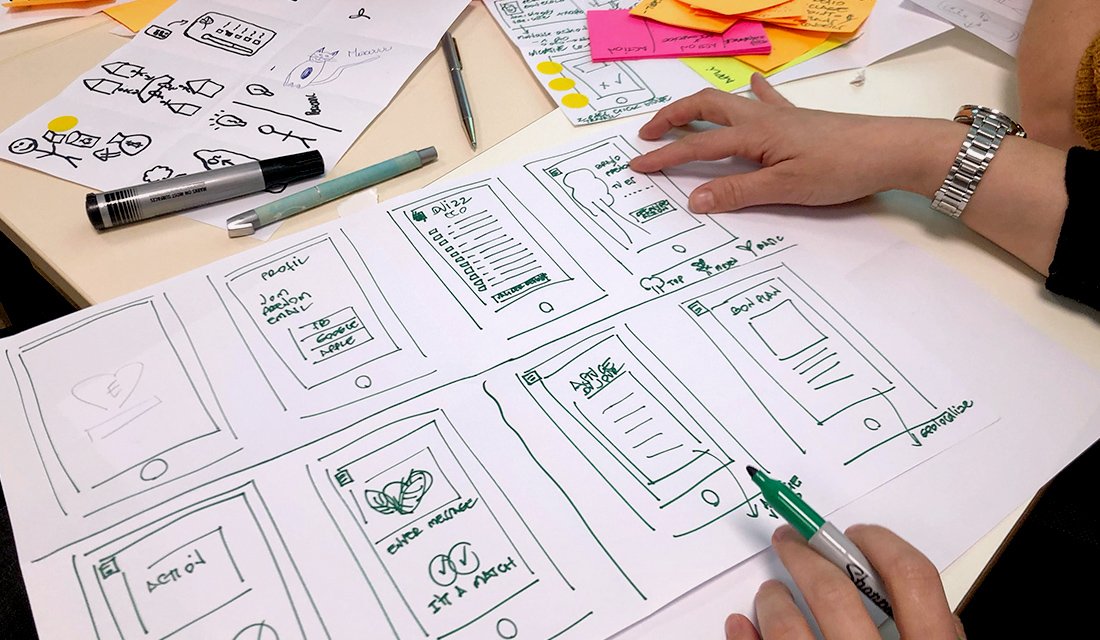It's simple math. Would you rather spend $40,000 to $160,000 to address a potentially critical issue in a solution you're developing?
Including user research in a project early will not only ensure your project succeeds, but it will also succeed at a much lower cost.

Research, however, is a loaded word. Many companies believe they don’t have the budget or resources to implement a research phase into their projects because they are envisioning the traditional concept of “Research.” That type of thinking is an anti-pattern that hinders project alignment and adds risk to the already risky process of change.
If a product or service is going to be used by people, you need to understand the context in which people will use it, the motivations they have for using it and the pain points experienced when using it. This is the heart of human-centered design, or user experience as it is often called. Only through research can problems be understood and UX-based solutions identified.

Research and development (R&D) is an important step to good solution development, but is normally done at the beginning of a project and does not carry through the full lifecycle of an existing project or initiative.
Research: This type of research is often conducted by a research division, consisting of multiple teams and R&D labs. It is common to have a user researcher position, a user research manager and a director of research. This type of research is often its own department dedicated to all types of research, but they tend not to be integrated into the lifecycle of an existing project or initiative.
research: This type of research – often called discovery, so it is not confused with Research – is conducted by a single person or team that is embedded with the team developing the product or service. This allows the researcher – whether formally titled or not – to be intimately aware of what is being produced and the research to be immediately implemented in the project. This type of research is a critical piece of human-centered design.
Research with a lowercase “r” doesn’t have to break the bank because there are time-tested lean methods that help identify key pain points and test/validate assumptions and hypotheses quickly and accurately – and they are cost effective. These methods are employed by even the largest companies because they also have the benefit of being fun, fast, collaborative and effective.
You can conduct user interviews with the goal of seeing problems through the eyes of the users, and you can also observe users firsthand and conduct surveys with closed and open questions. These efforts allow you to understand what the users do, say, think and feel about a current process or program. You can also conduct usability testing, which allows you to test designs you have created with your target audience and then turn observed insights into actions. In fact, testing with just 5 users can yield up to 85% of usability problems that can then be addressed quickly in redesign. There is no need to spend the time and money on more than 5 because, at that point, you start to see the law of diminishing returns come into effect.
This research doesn’t slow you down, but rather can accelerate the process. By acquiring defined user requirements and user stories, your engineering team can move forward with laser-guided accuracy. At the beginning of a project, there are so many possible design options. You can design something in any number of ways, but what the designer may perceive as the optimal solution, may not be. Through this early research and understanding, you’ll exhaust design options early, landing on the optimal solution and avoiding the need for expensive rework deep in development.

Before hiring a dedicated “researcher,” though, organizations should look at their existing teams. They likely already have qualified people that can undertake research for a project, but they just don’t know it yet – the individual might not know it yet either for that matter. These people are the Product Managers, Product Designers, UX Designers and others, that often already have the necessary skills to conduct simple and effective studies.

Collaboration, a deep understanding of the audience and solving directly for a problem/need drive effective and affordable products and solutions.
There are tools available that help supercharge your product teams to conduct research in a lean and effective way. The first step is assessing the capabilities (and appetite) your existing team has to build research into the process. Start there, and expand out as needed, but don’t leave it out.
If you’re setting out on a project and are worried it will fail before it even begins, let’s have a conversation about how human-centered design can help ensure you’re building the right thing, and how we can help research work for you to find the best solutions to your tech problems.

